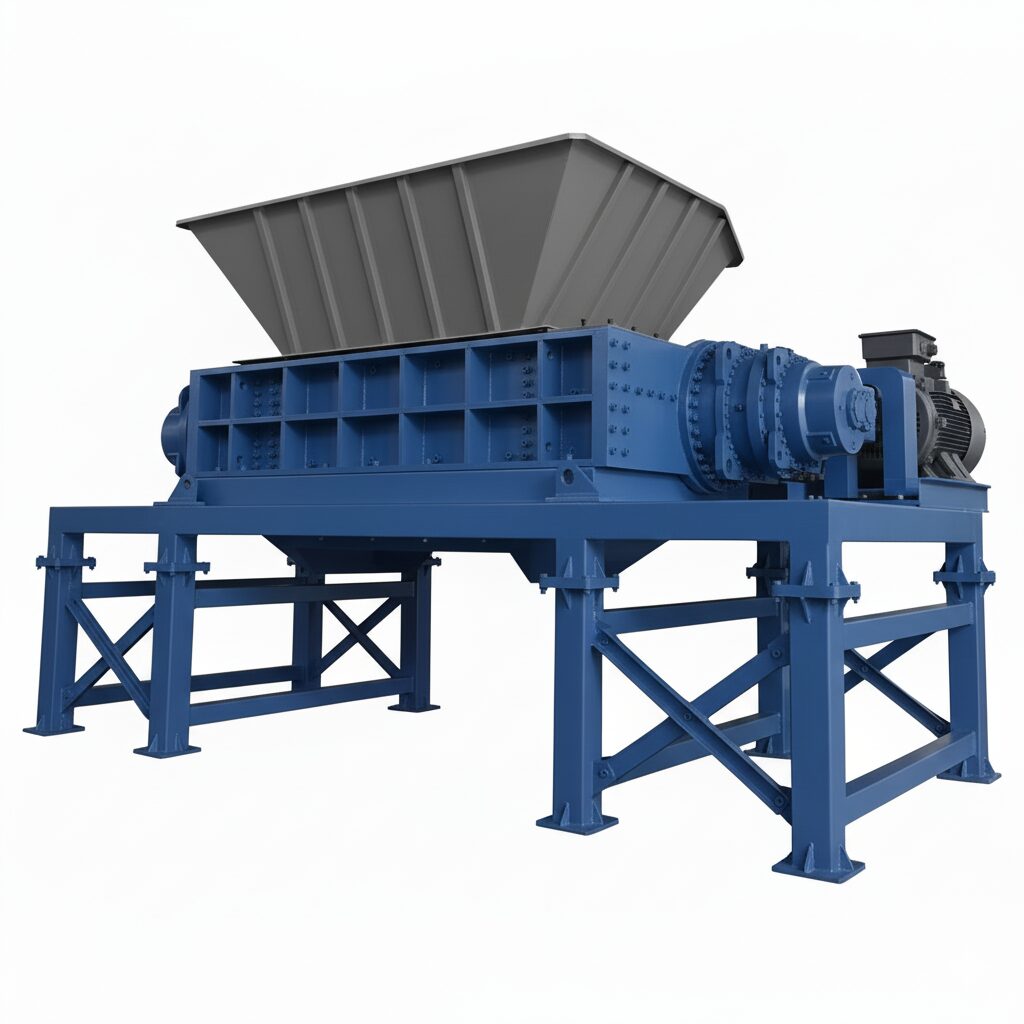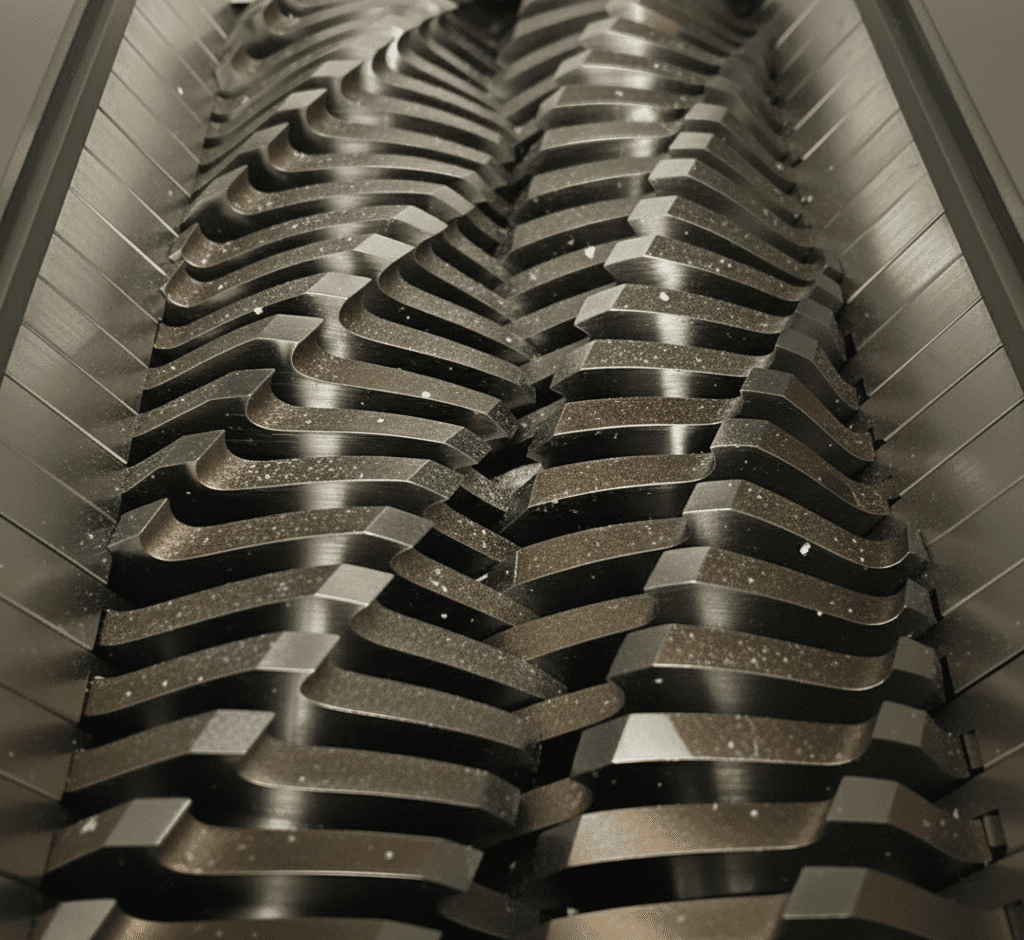
What Are Lithium-ion Batteries?
Lithium-ion batteries (LIBs) power everything from smartphones and laptops to electric vehicles and grid storage systems. They are valued because of their high energy density, relatively lightweight design, and rechargeable architecture. LIBs consist of multiple components: cathode materials (often containing cobalt, nickel, or manganese), anode materials (usually graphite), electrolytes (which are flammable organic solvents), separators, and metallic current collectors.
👉 Contact Us Email: Info@shredall.in, Phone: +91 9090003535. Explore our Shredder range and get expert assistance.
Why End-of-Life Lithium-ion Batteries Are a Critical Issue
- Safety Risks:
When lithium-ion batteries are damaged, overcharged, or stored improperly, they can suffer thermal runaway—a chain reaction where heat builds up uncontrollably, potentially causing fire or explosion. - Chemical & Environmental Hazards:
The chemicals in LIBs—lithium salts, cobalt, nickel, etc.—can leak into soil or water if batteries are thrown away improperly. These heavy metals and toxic components pose risks to human health and ecosystems. - Complexity and Variety of Battery Chemistry:
LIBs come in many designs and chemical compositions—some use lithium cobalt oxide (LCO), others lithium nickel manganese cobalt oxide (NMC), lithium iron phosphate (LFP), or even newer formulations. Different shapes (cylindrical, prismatic, pouch), packaging, and battery module designs make standardized disassembly and recycling difficult. - Economic & Logistical Challenges:
Collecting, transporting, storing, discharging, dismantling, and finally recycling lithium-ion batteries safely involves high costs. Sometimes, these costs exceed the value of the materials recovered. Fluctuating metal prices add uncertainty.

Battery shredder blades are essential, highly robust components designed to safely and efficiently break down end-of-life lithium-ion and other battery types as the first step in the recycling process. They are typically made from highly durable, wear-resistant steel alloys to withstand the extreme forces and abrasive nature of shredding metal casings, plastic, and the battery’s active materials. These blades operate within a specialized, often inert atmosphere (like nitrogen) environment to prevent the shredded, highly reactive materials from catching fire or exploding.
Recycling Methods & Open Issues
- Pre-treatment / Discharge: Before any mechanical or chemical recycling, batteries must be fully discharged, often dismantled. Damaged cells are especially dangerous and require special handling.
- Mechanical / Physical Processing: Includes shredding / crushing of battery packs to break them down into smaller pieces, then separating components (metals, plastics, electrolytes) by size, by magnetic or eddy-current separators. This process must be done with safety precautions to prevent sparks or short circuits. We ShredallTM provide Best Shredder for these processes. Our Shredder made high quality material and we supply worldwide at the best price and after sales support.
- Chemical Processes: Hydrometallurgy (using chemicals to leach out metals), pyrometallurgy (high heat processes), or newer direct recycling techniques. Challenges: high energy use, chemical runoff, hazardous by-products.
Role of Shredall in Lithium-ion Battery Management
Shredall can play a significant part in ensuring safe, efficient, and environmentally responsible handling of end-of-life lithium-ion batteries:
- Providing Specialized Shredding Equipment: Machines designed to shred battery packs safely, with features such as controlled feed rates, containment of dust or sparks, and mechanisms to avoid puncture of cells.
- Safety & Pre-Processing Protocols: Ensuring batteries are fully discharged, removal of external casings or batteries from devices before shredding, training operators on safe handling.
- Supporting Material Recovery: After shredding, facilitating separation of metals (cobalt, nickel, lithium etc.), plastics, casings and electrolytes so they can be processed in downstream recycling plants.
- Compliance & Environmental Best Practices: Designing systems that help clients meet regulations on hazardous waste, emissions, and safety; ensuring safe disposal or treatment of by-products.
Future Trends & What Needs to Improve
- Standardization: If manufacturers design batteries with recycling in mind—common formats, easier to disassemble—recycling will be cheaper and safer.
- Advanced Automation: Robotics or automated disassembly, AI-based sorting / chemistry detection to speed up processing and reduce risk.
- Economic Incentives & Policy Support: Subsidies, stricter regulations, extended producer responsibility can make recycling a viable business.
- Improved Safety Methods: Safer thermal management, better protocols for damaged cells, better storage and transportation norms.
Benefits of Shredding Batteries
Easier Retrieval of Valuable Materials
Batteries often contain valuable metals and materials that are frequently discarded instead of being reused. Our Shredall shredders reduce the battery components to a tiny size, making these materials easier to process, retrieve, and recycle. This process generates revenue and allows for the production of new goods.
Environmental Protection
Batteries are too often disposed of in landfills, or even worse, dumped into oceans or other water bodies. The heavy metals they contain can cause significant damage to ground and aquatic ecosystems. By shredding batteries, these heavy metals and other components are reduced, which facilitates proper and clean disposal and/or recycling.
Conclusion
Lithium-ion batteries are critical to modern technology, but they pose serious challenges at end of life. Safe disposal, secure data destruction, and efficient recovery of valuable materials require specialized handling. With the right equipment and protocols, Shredall is well positioned to support responsible lithium-ion battery shredding and recycling—balancing safety, profitability, and environmental sustainability.

